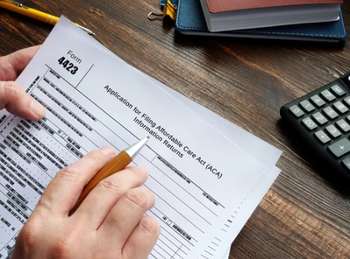
Pulmonary Embolism Prevalence Appears Lower in Hospitalized Patients With COPD
The prevalence of pulmonary embolism in certain hospitalized patients with chronic obstructive pulmonary disease (COPD) may be lower than previous research suggests, according to a recent study.
The prevalence of pulmonary embolism in hospitalized patients with chronic obstructive pulmonary disease (
This contradicts a meta-analysis from 2017 that found the prevalence of pulmonary embolism was 16% in hospitalized patients with unexplained acute COPD
The investigators also determined the prevalence of venous thromboembolism in patients with COPD with acute exacerbations. This multicenter cross-sectional trial was the largest prospective study focused on detecting the prevalence of pulmonary embolism using a predefined, standardized diagnostic algorithm for pulmonary embolism in patient with a COPD diagnosis and who had acute worsening respiratory symptoms within 48 hours of being admitted to a hospital, the authors noted.
Previous studies have reported a high incidence of pulmonary embolism in patients with acute exacerbations of COPD. However, general diagnostic management of suspected acute pulmonary embolism may be ineffective for patients with COPD exacerbations, especially when including a ventilation-prefusion lung scan. These scans make it difficult to discern how and when to screen a patient with acute COPD exacerbations. Also, the presentation of acute pulmonary embolism may look similar to COPD exacerbations, which could present challenges for physicians on whether they should suspect pulmonary embolism presence at all.
The investigators recruited 740 patients with COPD and acutely worsened respiratory symptoms, admitted to 7 participating French hospitals between January 2014 and May 2017. All patients were older than 18 years, were included within 48 hours of hospital admission, and received a 3-month follow-up, with the last one occurring on August 22, 2017. The mean (SD) age of the participants was 68.2 (10.9) years and 37% (274) were women.
Overall, pulmonary embolism was detected in 44 (5.9%) patients. At the 3-month follow-up, pulmonary embolism was detected in 5 (0.7%) of the 670 patients who were determined to not have venous thromboembolism at admission and who did not receive anticoagulation agents, 3 of whom suffered a pulmonary embolism–related death.
By the 3-month follow-up, 50 of 740 (6.8%) patients had died, and a higher proportion (25.9% vs 5.2%) of patients who had venous thromboembolism at admission died compared with patients who did not (P < .001).
Venous thromboembolism was detected in 11.7% of patients who were suspected to have a pulmonary embolism (n = 299) and in 4.3% of patients not suspected to have a pulmonary embolism (n = 441).
The investigators noted several study limitations, including that patients with mild acutely worsening
Additionally, 17.6% of patients suspected to have venous thromboembolism did not complete the full pulmonary embolism assessment, mostly due to protocol violations, so the results may have underestimated the prevalence of venous thromboembolism at inclusion. None of these patients exhibited symptomatic venous thromboembolic events at the follow-up.
It’s also possible that suspicion of pulmonary embolism may have been biased toward a higher frequency in the study, because suspicion was determined at the discretion of emergency department physicians.
“Further research is needed to understand the possible role of systematic screening for pulmonary embolism in this patient population,” wrote the investigators.
Reference
Couturaud F, Bertoletti L, Pastre J, et al. Prevalence of pulmonary embolism among patients with COPD hospitalized with acutely worsening respiratory symptoms. JAMA. 2021;325(1):59-68. doi:10.1001/jama.2020.23567
Newsletter
Stay ahead of policy, cost, and value—subscribe to AJMC for expert insights at the intersection of clinical care and health economics.








































